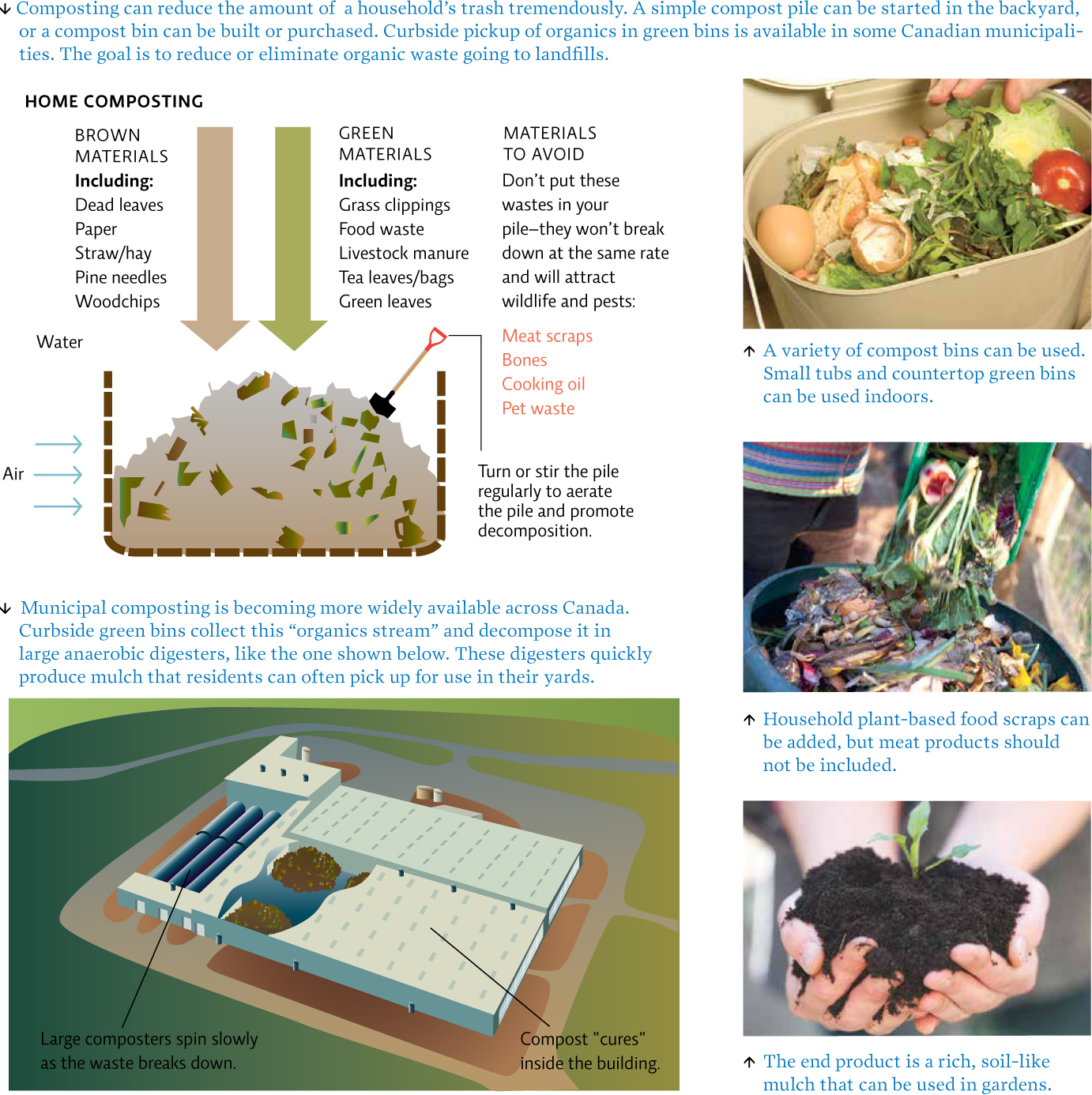17.6 When it comes to managing waste, the best solutions mimic nature.
While nondegradable trash like plastics present a challenge for disposal, much of our waste is biodegradable and we can apply the concept of biomimicry—emulating nature—to teach us how to better deal with this part of our waste stream. Composting—allowing waste to biologically decompose in the presence of oxygen and water—can turn some forms of trash into a soil-like mulch that can be used for gardening and landscaping. Composting can be done on a small scale (in homes, schools, and small offices) or on a large one (in municipal “digesters”). But this only works for organic waste, such as paper, kitchen scraps, and yard debris. [infographic 17.6]

307
Another promising solution to some of our waste woes involves converting garbage or its by-products into usable energy. For example, the heat produced during incineration might be converted into steam energy or electricity. And the methane produced during anaerobic decomposition can also be harnessed as an energy source. Landfill methane can be captured and used to produce electricity on site and scientists are working on ways to use methane-producing microorganisms to process trash in vats or digesters.
In fact, the concept of spinning waste into energy is so appealing that it has even extended to waste found in the open ocean. Not long after the Atlantic and Pacific patches were found, a San Francisco-based environmental group tried devising ways to turn the plastic bits into diesel fuel. That plan proved impossible. “There is no way to remove all those millions of tiny pieces without also filtering out all the millions of tiny creatures that inhabit the same ecosystem,” says Kara Lavendar Law. “So once it’s out there, all we can really do is hope that nature eventually breaks it all the way down.” That could take hundreds to thousands of years. In the meantime, she says, we need to stop adding to the patches that already exist.
308